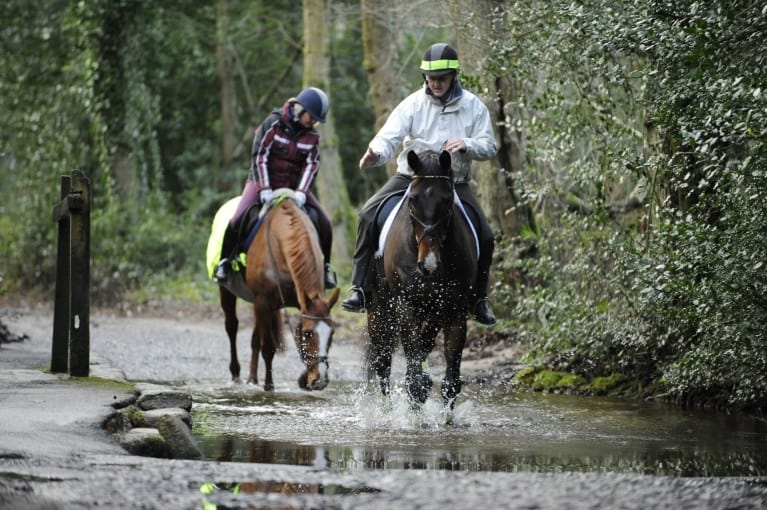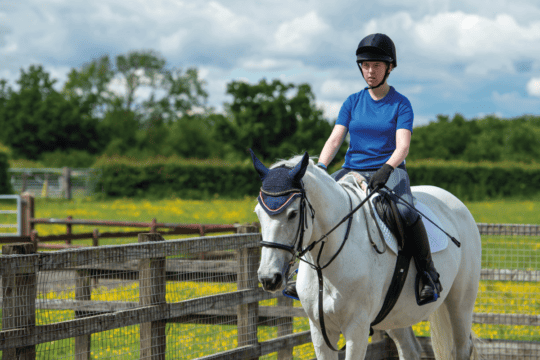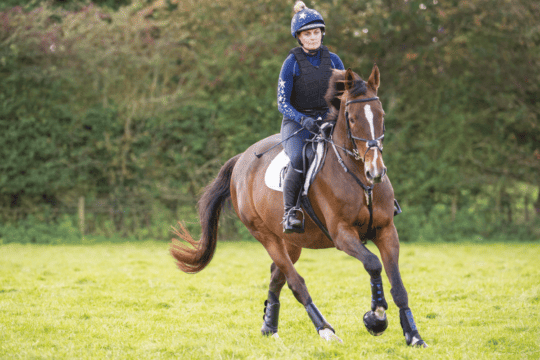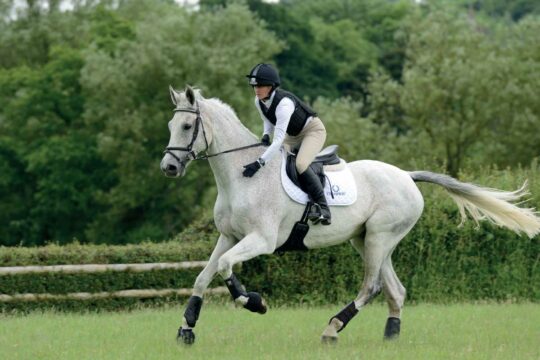My horse refuses to walk through puddles or water, what can I do to help her get over this?
Posted in Mind Matters
Q: My Kladrubian mare refuses point-blank to step into any little pool of water that forms in our outdoor school, no matter how shallow and small it is. What can I do to help her get over this?

Liz Rabinowitz answers:
To help you understand this better, consider your horse’s eyesight and proprioception. In simple terms, how your horse sees the world.
Unlike humans, who have binocular vision and can focus both eyes on the world, horses have monocular vision, and see a different view of the world from each eye (see Dec 2007 H&R). As nature made us predators, our eyes were placed on the front of our heads, to help us seek out prey. Horses, being part of the menu for thousands of years, were given their own visual system, to give them a chance to evade predators.
All-round vision
This system allows the horse a 360-degree field of vision. Although great for keeping ‘an eye’ on his surroundings, it does come with a few flaws. In your horse’s case, because of the way her eyes are placed on her head, she can’t fathom depth.
Imagine looking at a puddle and not knowing whether or not you may sink up to your neck if you stepped into it. To the horse, a puddle appears as a dark hole that’s full of potential dangers. Also, as a horse walks towards a puddle, it disappears from view when they are about 4ft away from it.
So how does a horse manage water? They rely on previous, positive experiences which taught them not to fear puddles, and to trust their handlers and riders. They also use proprioception.
Proprioceptors are receptors all mammals have in their muscles, tendons and joints that allow the body to recognise how much effort is required – and in what position the body must be in – to safely negotiate the landscapes we all encounter. They are used unconsciously and allow us to perform the simplest to the most complex of movements, with minimal mental exertion.
Proprioception
Have you ever climbed stairs holding a heavily laden tray in front of you? Although you can see the stairs from a distance, as you approach, they are blocked from view by your tray. However, climbing the stairs is a doddle, you don’t even have to think about it. And that is proprioception in action.
Therefore, your mare’s proprioceptors have either not been taught to recognise how to cope with the changing texture, depth and potential slipperiness of the ground around and in the puddle; her shoeing may be preventing correct proprioception; or she has encountered the alien feeling of puddles before and the memory is a negative one.
First, find an area where you can dig an indentation in the ground. Then get your mare used to the feel of walking around, walking into and standing in the indentation. Once comfortable with this, dig the hole a bit deeper and repeat the above. How quickly you progress will be up to you and your horse, but don’t push her too hard too soon.
Help, not hinder
Your horse must learn that there is nothing to fear and that you’re there to help. Once she can stand with both front feet in the hole, stand her in proximity of your puddle and wet her feet with water from a bucket. Once she accepts this, stand her in the dry puddle and gradually add water.
Read her reactions and proceed only when she is confident. This can take a few days. Your goal is to cover her feet with water and have her stand quietly in the puddle for a few minutes. Treats will help to encourage bravery and a positive response.
Depending on the horse, I may repeat this for a few days in a row before moving on to asking her to walk out of the puddle and back into it. To cement the new skill of ‘puddle jumping’, I gradually add more of my own puddles, and finally graduate to walking in and out of natural ones.
Be patient!
Once your mare can handle all of this in-hand, repeat it all ridden. Remember, though, proprioception is affected by the weight and influence of the rider, so she may question the puddles again. You must patiently repeat the above (ideally with a friend leading and watering while you ride), as a loss of temper or an attempt to drive her through the puddle will most likely result in her initial aversion.
I’ve not known this method to fail yet, but some horses are more challenging than others. Horses, like humans, all learn at different rates. This method does, however, allow the horse to learn from his own experience of the situation and the results are, therefore, long-lasting.















